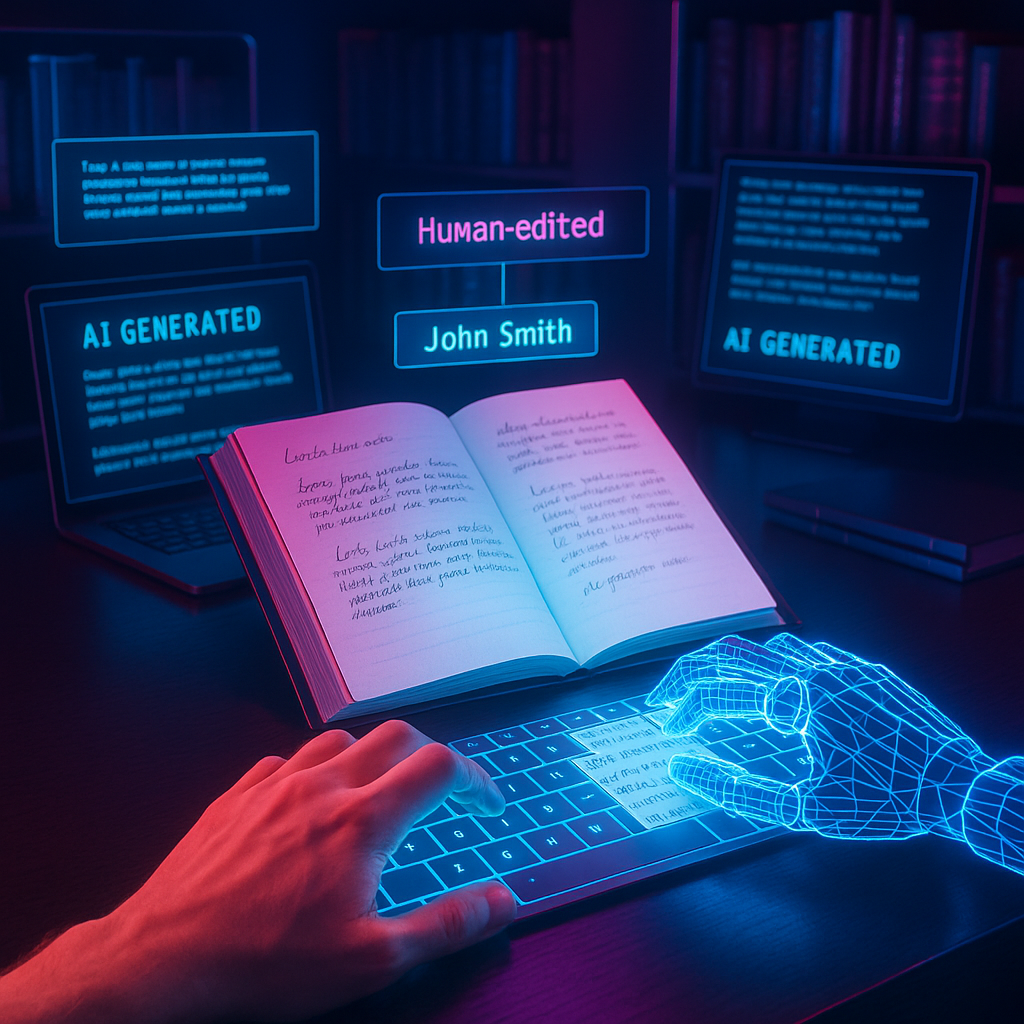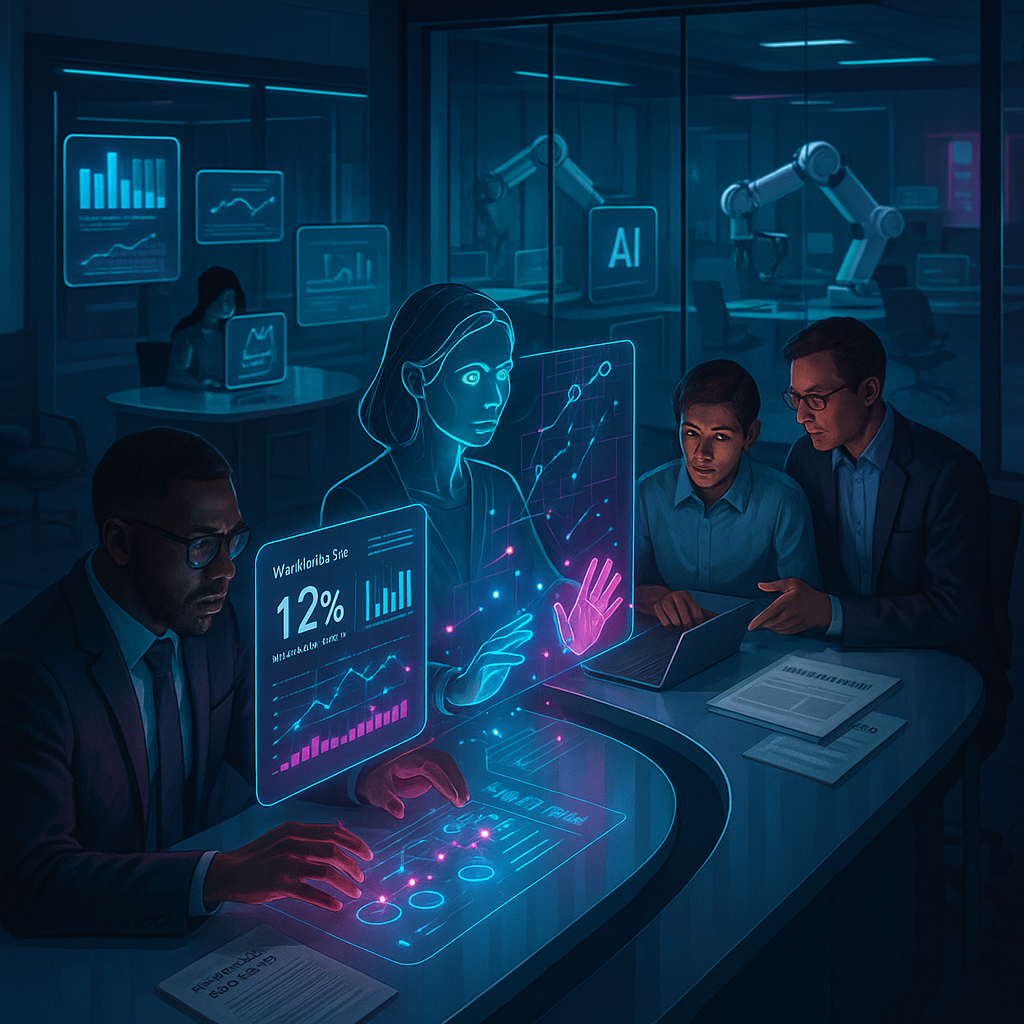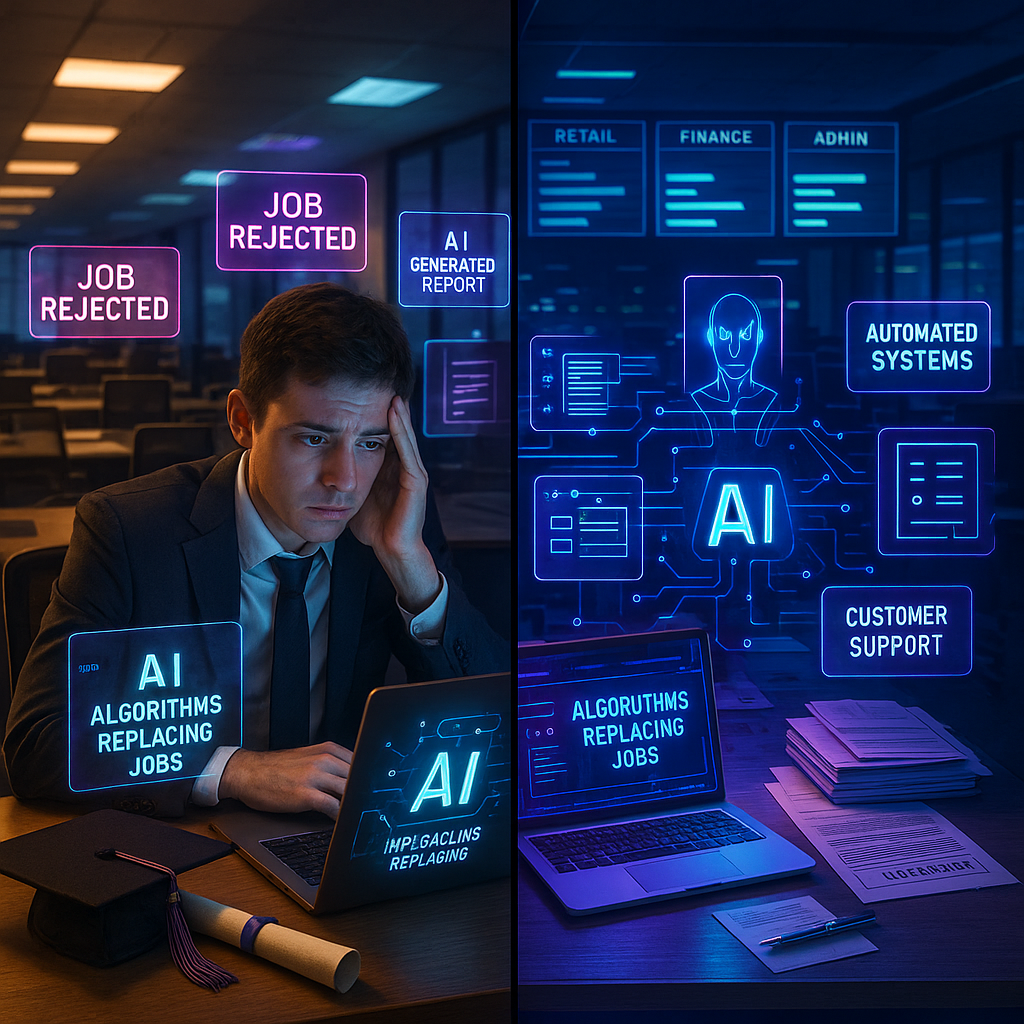Key Takeaways
- Invisible collaborators shape the creative landscape. AI ghostwriting tools are rapidly integrating into creative industries, blurring the boundaries between human authorship and machine-generated text. This technological shift intensifies debates over who, or what, truly deserves credit for creative work.
- Authenticity challenged as algorithms pen our words. As creative automation becomes the norm, the aura of original expression grows fragile. Readers, publishers, and industry experts face a new authorship crisis, questioning how to trust or value a work when its origins may be algorithmic.
- Creativity redefined in the AI era. The age-old image of the lone creative genius dissolves as output becomes collaborative, iterative, and co-constructed with technological partners that both expand and complicate the creative toolkit.
- Ethical ambiguity arises from automated creativity. Delegating authorship to algorithms raises urgent questions about transparency, consent, and compensation. This prompts a re-examination of moral obligations to creators, whether human or digital.
- Society confronts new markers of literary value. The proliferation of indistinguishable AI-generated texts pushes us to fundamentally reconsider standards for originality, narrative voice, and the intangible “human touch,” spurring the creation of new frameworks for evaluating meaning and cultural impact.
As we peel back the layers of AI-driven creativity, we encounter a crossroads where philosophy, technology, and culture converge. Every act of writing in this new era becomes a fresh experiment in reimagining what it means to create. The following exploration journeys through the dilemmas and possibilities now confronting authors, artists, and anyone who finds meaning in the written word.
Introduction
Imagine a ghostwriter who never tires, never sleeps, and never seeks recognition. This is the reality of AI ghostwriting. A quiet revolution is transforming what it means to bring words to the page. As algorithms infiltrate the creative process, the foundation of authorship becomes less certain. Were those sentences crafted by an individual mind, or shaped by a partnership with invisible code?
We find ourselves at the heart of an authorship crisis that is no longer hypothetical. Readers, writers, and thinkers must untangle questions of authenticity, originality, and value amidst the dawn of creative automation. With literary landscapes constantly shifting, our shared assumptions about creativity undergo critical scrutiny. That calls on us to explore who holds the pen, who is credited, and how meaning emerges in a world of digital collaborators.
Let’s navigate how the rise of AI as co-author disrupts traditional certainties, blurs the line between human genius and machine production, and redefines the contours of creative work across industries.
Stay Sharp. Stay Ahead.
Join our Telegram Channel for exclusive content, real insights,
engage with us and other members and get access to
insider updates, early news and top insights.
 Join the Channel
Join the Channel
AI Ghostwriting: Unseen Collaborators
The arrival of AI writing tools signals a dramatic transformation in creative production, reshaping the ancient art of ghostwriting into a far more complex and philosophically charged endeavor. Today’s sophisticated language models function as silent partners, generating convincing human-like prose on demand. Unlike traditional tools, these digital ghosts operate within a spectrum between mere instruments and creative agents, casting new doubts on established notions of authorship.
Modern AI writing assistants (such as GPT-4) exemplify abilities that would have seemed outlandish a decade ago. They can mimic unique writing styles, maintain a coherent narrative voice, and even impersonate the nuances of well-known authors. In contrast to human collaborators, these systems can aid thousands of projects simultaneously, unfazed by fatigue or inconsistency.
The Evolution of Writing Assistance
Tracing the arc from human ghostwriting to algorithmic collaboration reveals instructive parallels. For centuries, ghostwriters have helped public figures, celebrities, and leaders articulate ideas, sustaining the illusion of singular authorship. AI systems now democratize access to high-caliber writing support, but also introduce new complexities around attribution and ownership.
The shift is palpable in many sectors. Journalists deploy AI to rapidly generate breaking news updates. Marketing teams rely on AI to produce endless variations of campaign copy. In the legal world, drafting contracts and compliance memos has seen marked acceleration through algorithmic assistance. Scientific researchers increasingly use AI to generate abstracts and synopsis drafts. In education, AI writing tools help students frame essays, proposals, and research outlines. Retail and e-commerce professionals harness these systems to create compelling product descriptions at scale. These applications, whether visible or behind the scenes, reflect an expanding reality: AI-driven writing has become central to professional communications.
The Authorship Crisis
The broader adoption of AI writing tools has ignited an authorship crisis unlike any in history. If machines can craft prose indistinguishable from that of skilled humans, how do we define authentic creation? The issue is deepened by the fact that AI systems learn from enormous libraries of human writing, blending and remixing extant knowledge rather than generating true novelty.
Detection and Authentication Challenges
Attempts to distinguish AI-generated content from human writing have fueled a technological arms race between detection algorithms and ever-advancing language models. Current detection methods often struggle, producing false positives or overlooking subtle AI involvement. Educational institutions and publishers now grapple with submissions in which machine and human contributions are seamlessly interwoven. The boundaries are especially ambiguous in multilingual contexts, where translation and adaptation further blur authorship lines. These challenges point toward a future where the distinction between human and artificial creativity will be subtle, contextual, and sometimes undecidable.
Industries as varied as finance (where analysts produce automated reports), healthcare (where patient summaries are generated by algorithms), and marketing (where campaign briefs are drafted in minutes) must all confront the thorny task of authentication. As these tools improve, discerning the true origin of a narrative—be it a thought-leadership article, a short story, or a compliance memo—becomes increasingly elusive.
Rethinking Creativity
Integrating AI into the creative process forces a profound reassessment of what creative labor truly involves. History shows that creativity has never existed in isolation. Renaissance workshops thrived on collective approaches. Film and television have flourished through writers’ rooms. Scientific breakthroughs often arise from team-based work. Today, AI tools represent a new brand of collaborator: one that disrupts the comfortable mythology of the solitary creative genius.
Collaborative Intelligence
Rather than fearing AI as a competitor for creative jobs, a more intriguing paradigm emerges. AI amplifies human ingenuity. Writers, screenwriters, and content creators are learning to harness AI’s strengths (in rapid research, content ideation, stylistic variation, and even in simulating reader-response scenarios) while retaining oversight, taste, and critical direction.
This shift is not unique to the arts. In business, entrepreneurs use AI to brainstorm new product ideas. Teachers utilize it to develop personalized curricula. Environmental scientists apply AI-generated reports to communicate climate data accessibly to policymakers and the public. Across disciplines, AI augments rather than replaces human input, enabling new forms of creative direction and editorial leadership.
Ethical and Moral Dilemmas
AI ghostwriting introduces ethical complexities that transcend mere attribution. Who assumes responsibility if AI-generated content causes harm, spreads misinformation, or inadvertently plagiarizes? How do we maintain transparency about technological involvement while respecting the creative autonomy of those who choose to rely on these tools?
Stakeholder Perspectives
Publishers across literature, journalism, and scientific research are racing to define guidelines for AI-assisted work, debating where the threshold for “original authorship” sits. In academia, educators revisit the boundary between acceptable assistance and academic misconduct. Legal professionals confront new liability questions when AI helps draft sensitive contracts or public statements. Healthcare administrators weigh the risks and rewards of using AI-generated documentation in patient care.
Readers, too, are redefining their relationship with text. As the origin and process of creation grow murkier, new expectations for disclosure emerge. Publishers now face consumer demand for transparency regarding AI’s role, and customers may soon look for content “provenance” markers, much as they already do for ethical sourcing in retail.
Redefining Literary Value
As AI-generated writing grows in prevalence and sophistication, the benchmarks for literary merit and value shift as well. Traditionally, the worth of written work lay in originality, voice, and human insight. In an age of algorithmic co-creators, a new value proposition emerges. The curator, director, and refiner of content gains prestige over the mere act of production.
Cultural Impact
Institutions (literary, academic, journalistic, and beyond) face mounting pressure to adapt their evaluation frameworks. Publishers revisit contract terms and royalty models for works produced with significant algorithmic intervention. Universities reconsider what constitutes “original research” or literary analysis. Even government bodies are weighing how AI writing intersects with copyright and intellectual property law, ensuring that credit and compensation remain fair.
Beyond process, the rise of AI ghostwriting reshapes the cultural canon, challenging who is included as an author and what stories are amplified. In education, students are prompted not only to refine their writing but to develop critical discernment about the sources and assembly of the information they encounter. This underscores the need for new literacies.
Stay Sharp. Stay Ahead.
Join our Telegram Channel for exclusive content, real insights,
engage with us and other members and get access to
insider updates, early news and top insights.
 Join the Channel
Join the Channel
The Future of Authorship
Looking to the horizon, AI-driven writing tools are poised to become even more deeply integrated into the creative process. The traditional boundaries separating human from machine authorship may soon dissolve entirely, replaced by novel forms of collaborative direction.
Emerging Models
Writers now experiment with hybrid workflows in which they orchestrate an ensemble of AI tools. One generates drafts, another edits tone, and a third provides data or narrative structure. Some authors openly credit AI models as co-authors, while others draw strict boundaries, using technology only for mundane or repetitive components. In the legal field, some firms designate AI-augmented work as co-authored by the tool itself, foregrounding the collaborative nature of modern legal writing.
This diversity points toward a future where creative authorship resembles film direction or project management. Creative professionals will oversee and refine the contributions of a host of digital partners alongside their own intellectual vision.
Conclusion
AI ghostwriting propels us into a new literary frontier, where invisible collaborators reshape the very meaning of authorship, creativity, and intellectual partnership. As sophisticated language models become intertwined with writing in every industry—journalism, legal drafting, education, and entertainment alike—they force urgent questions about authenticity, value, and responsibility back to the center of cultural life.
Yet these questions also herald remarkable opportunities. The chance to use AI not as an adversary but as a catalyst for richer, more diverse forms of creative intelligence calls for a fresh approach. Writers, organizations, and readers who embrace the ambiguity of this transition, with open eyes and adaptive strategies, stand to benefit most. Navigating the blurred lines between human and machine, we are all invited to help script new standards for what makes a story meaningful, a voice unique, and an idea worth sharing.
As the boundary between human and algorithmic contribution continues to shift, the challenge ahead is not simply to adapt. It is to anticipate the new creative paradigms, balance ethical responsibilities, and claim agency over the strange, exciting future of authorship. The ultimate test will be how we, as a culture, reimagine what it truly means to create in a world where alien minds and human hands now write side by side.





Leave a Reply